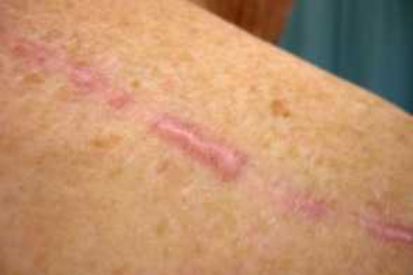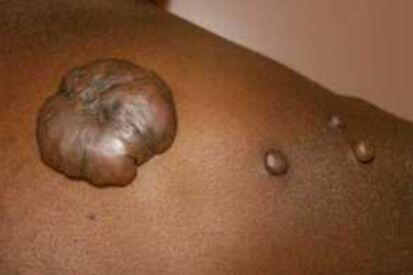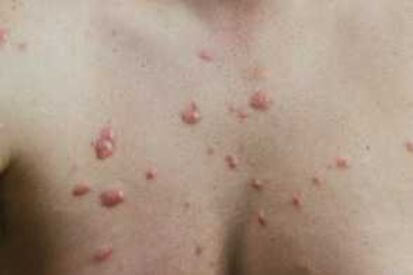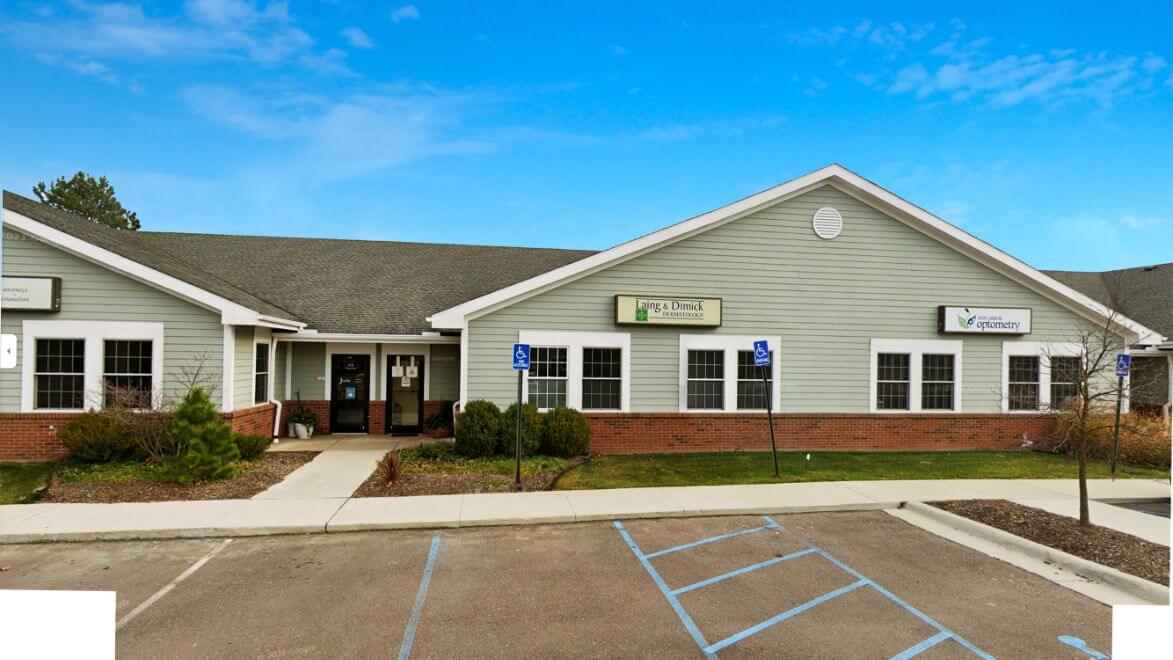Keloids
Understanding Keloids: Causes, Concerns, and Treatment at Pinnacle Dermatology
Keloids are a distinctive type of raised scar that form when the skin overreacts to an injury or trauma, resulting in an excess growth of collagen. These raised, itchy, or painful scars can develop after skin injuries, piercings, or surgical procedures, and affect individuals with many skin types.
At Pinnacle Dermatology, we recognize that keloids are more than just a cosmetic concern. Our expert dermatologists specialize in understanding and treating keloids, offering advanced solutions tailored to your unique skin characteristics.
If you're seeking effective keloid treatment, schedule an appointment with a trusted Pinnacle Dermatology provider. Our team will conduct a thorough evaluation and develop a personalized treatment plan to ensure the health and aesthetics of your skin.
Examples of Keloids
.jpg)
.jpg)
.jpg)
.jpg)
What are the Symptoms of Keloids?
- Raised and overgrown tissue extending beyond the borders of the original wound, forming a raised scar.
- Distinct coloration compared to the surrounding skin, appearing pink, red, brown, or darker.
- Itching and burning sensations at the site of the scar.
- Continuous growth.
- Triggered by trauma incidents such as burns, cuts, surgical wounds, or even after conditions like chickenpox.
- Recurrence or propensity to recur even after removal or treatment.
- Restricted mobility when keloids form over joints or areas of movement due to their firm and raised nature.
Causes of Keloids
- Abnormal response to skin injury or trauma, where the body produces an excess of collagen during the healing process.
- Genetic predisposition plays a role, with susceptibility varying among individuals.
- Skin type is a contributing factor, with darker skin tones, including African, Asian, or Hispanic, being more prone to keloids.
- The type of injury or trauma, especially repetitive incidents like piercing or tattooing, can increase the risk of keloid development.
How to Prevent Keloids
Preventing keloids involves taking proactive measures to reduce the risk of excessive scar formation, especially after skin-related injuries or procedures. Here are some strategies to help prevent keloids:
- Early Wound Care: Practice proper wound care by cleaning cuts, burns, or surgical incisions with mild soap and water. Keep the area covered with a sterile bandage until it heals.
- Pressure Therapy: Apply pressure to healing wounds using specialized dressings or bandages. This technique can help flatten scars and minimize the risk of keloid formation.
- Avoidance of Irritants: Minimize exposure to irritants, such as clothing that rubs against the healing wound. Choose loose, breathable fabrics to reduce friction.
- Steroid Injections: In cases where individuals are prone to keloids, dermatologists may recommend corticosteroid injections into the healing tissue to prevent keloid formation. These injections help reduce inflammation and excess collagen production.
- Moisturization: Keep the healing skin well-moisturized with a quality moisturizer. Well-hydrated skin is less prone to developing abnormal scars.
- Sun Protection: Protect healing scars from sun exposure, as UV rays can worsen scarring. Use sunscreen with a high SPF on the healing area when exposed to sunlight.
- Avoidance of Body Piercings: If you are prone to keloids, consider avoiding body piercings or tattoos, as they can trigger excessive scar tissue formation.
- Early Treatment of Acne and Infections: Promptly treat acne and skin infections to minimize the risk of scarring. Consulting with a dermatologist for effective management is crucial.
It's essential to note that not all keloids can be prevented, especially in individuals with a strong genetic predisposition.
Keloids FAQs
Keloids are generally not harmful to your health, but they can cause cosmetic concerns and discomfort. Dermatologists can help manage keloids to improve their appearance and reduce symptoms.
While both keloids and hypertrophic scars are forms of excessive scarring, keloids extend beyond the boundaries of the original wound and can continue to grow over time. Hypertrophic scars, on the other hand, stay within the confines of the wound.
Keloids are generally painless, but they can sometimes be itchy or tender. Scratching should be avoided to prevent irritation and further growth. Dermatologists can recommend strategies to relieve itching.
Keloids usually don't go away on their own. They may continue to grow over time. Seeking dermatological advice early on is crucial for proper management and to prevent them from becoming larger.
How to Treat Keloids
Our skin experts can determine your treatment plan for keloids. Schedule an appointment today to start your healthy skin journey.
Featured Blogs

- General Dermatology
- Skin Care
- Chronic Skin Conditions
We asked one of our skin care professionals for tips on how to clear up acne. Here's what he had to say.
Read More
- Sun Safety
- Skin Care
- Cosmetic Treatments
Are age spots a natural part of aging? Though many of us in our 20s and 30s would like to think so, the reality is age spots (a.k.a liver spots) don’t just mean you’re getting older: they’re also a sign that your skin is getting too much sun exposure.
Read More
- Skin Cancer
- Sun Safety
The sun's ultraviolet (UV) radiation poses a significant risk. Discover ways to protect you and your loved ones from the sun and keep your skin healthy all year long.
Read MoreFeatured Products for Keloids
Check your local office for current stock!
Check your local office for current stock!


